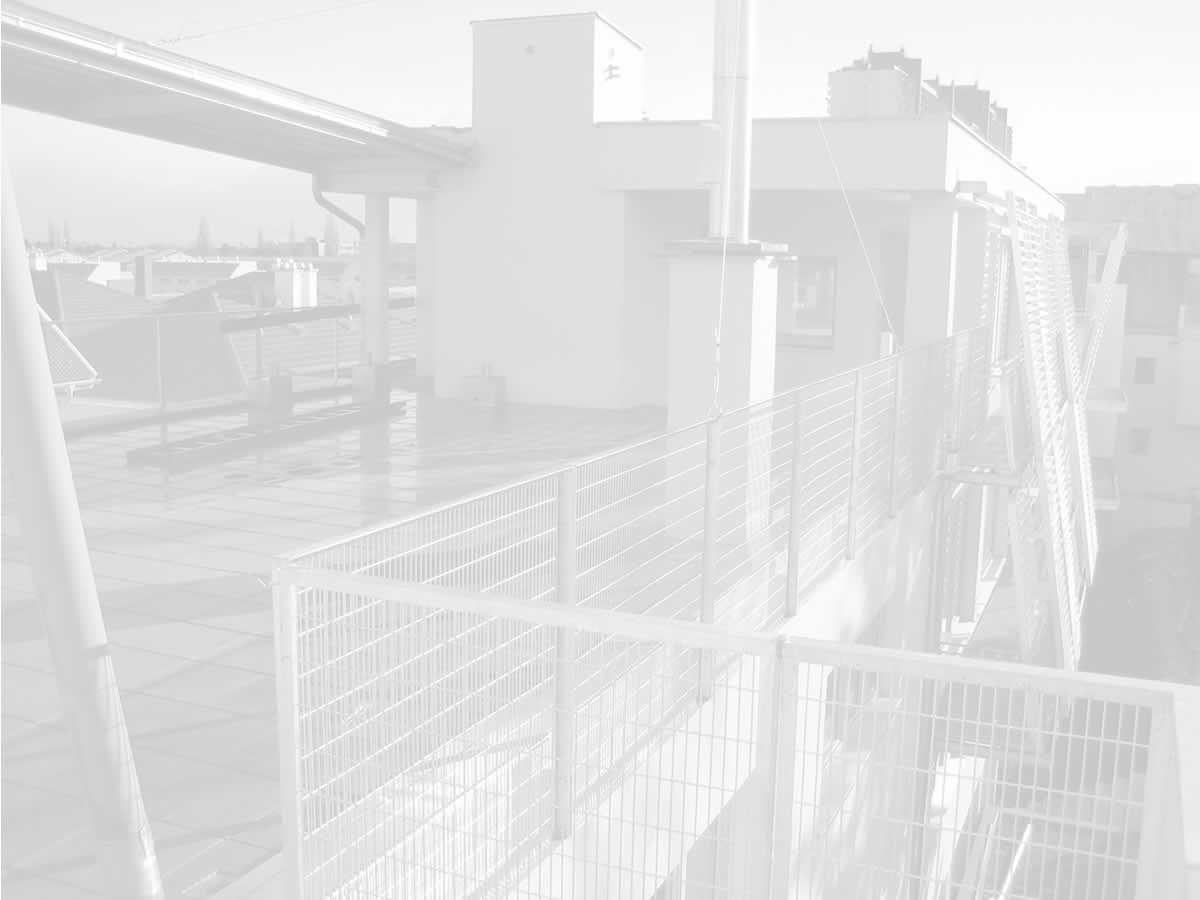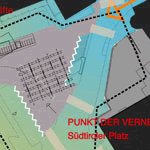
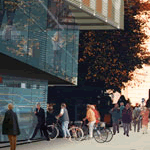
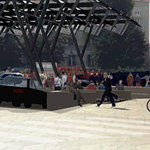
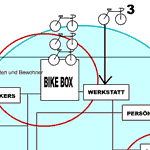
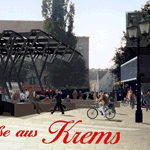
|
//bikelid
1st prize invited competition (amoE*)
'Infocenter/Bicycle Garage', Krems 2000
The town of Krems wants a public bicycle garage. The new facility is to enhance the position and presence of cyclists in Krems - both locals, who will increasingly switch from cars to bicycles, and tourists coming into town by bike from the cycle path along the river Danube. Cyclists will be a more frequent feature of the urban space, leading to overlaps with other traffic modes both in the streets and in the pedestrian zone. Having decided to build the bicycle garage, the local administration will have to react to these overlaps.
Squares and streets that accommodate pedestrians, cyclists and cars at the same time on the basis of mutual consideration contribute to a broader, modern definition of urban structures and the urban condition.
Orientation, visibility and presence in the urban space: the public bicycle garage and the info centre provide an orientation aid and starting point for visitors coming to Krems. The buildings are well visible - both from the Steiner Tor (- the gate to the historic town centre) and for cyclists arriving in town. A large roof covers the square and spans its different parts. Suedtiroler Platz stands for equivalence and balance of all traffic modes. The Steiner Tor marks the end of the pedestrian zone in the historic town centre, forming a clear barrier in the existing urban space of Krems. Additional infrastructure facilities for visitors and the local population on Suedtiroler Platz direct the general flow of movement from the pedestrian zone through the Steiner Tor out into the expanded urban space. The result is a more densely networked and increasingly dynamic urban structure. Subsequently, a speed limit of 30 km/h is introduced on Suedtiroler Platz. Car traffic slows down, improving the mobility of cyclists and pedestrians. Floor markings and different floor materials help emphasize the demand that, in road traffic, the stronger should always be considerate towards the weaker.
More and more zones of equivalence form. The local administration of Krems sets the first incentive for change by offering the adequate infrastructure / public bicycle garage. Public take-up of the infrastructure leads to changes which are not limited to one building but influence a more substantial part of the town. Suedtiroler Platz is chosen as the location for the new infrastructure. The square forms the specific context within which the demanded facilities are to be positioned. A number of conclusions from the analysis of Suedtiroler Platz remain valid during the project's revision.
|
